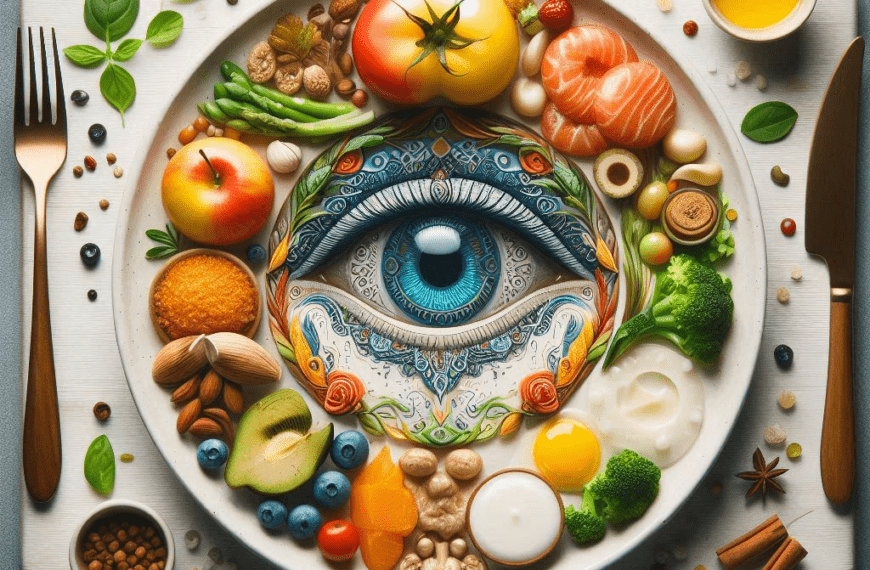
In the grand theater of your body, there’s a performance unlike any other unfolding: the gut-brain ballet. This isn’t just biological poetry; it’s a scientific revelation that’s reshaping our understanding of nutrition, mental health, and the delicate dance of our emotions. Welcome to “The Gut-Brain Ballet: Mindful Eating for Emotional Equilibrium” – where your plate becomes the stage for a performance that could transform your mood, mind, and overall well-being.
Act I: The Enteric Enigma – Your “Second Brain”
The Gut-Brain Axis: A Two-Way Street of Signals
Imagine a bustling information highway, but instead of cars, it’s filled with neurotransmitters, hormones, and immune factors. This is your gut-brain axis:
- The enteric nervous system (ENS): Often called the “second brain,” it lines your gut with as many neurons as your spinal cord!
- Vagus nerve: The body’s longest cranial nerve, it’s like a fiber-optic cable transmitting messages between gut and brain.
- Serotonin surprise: Did you know 95% of your body’s serotonin, the “happiness hormone,” is produced in the gut?
The Microbiome: Trillions of Tiny Dancers
Your gut hosts a universe of microbes, and they’re not just passive passengers:
- Gut flora balance: More good bacteria mean more stable moods.
- Psychobiotics: Certain probiotics can reduce anxiety and depression.
- Microbiome diversity: A varied gut “ecosystem” enhances emotional resilience.
Act II: Casting Your Emotional Ensemble – Nutrient-Rich Players
The Serotonin Symphony: Foods that Sing “Happy”
- Tryptophan troupe: Turkey, eggs, cheese – these amino acid-rich foods are precursors to serotonin.
- Complex carb chorus: Whole grains, sweet potatoes – they help tryptophan cross the blood-brain barrier.
- Probiotic prima donnas: Yogurt, kefir, kimchi – for those mood-boosting microbes.
The Anti-Inflammatory Orchestra: Calming the Inner Storm
Chronic inflammation can lead to brain fog and mood dips:
- Omega-3 soloists: Salmon, walnuts, flaxseeds – nature’s anti-inflammatories.
- Colorful corps de ballet: Berries, leafy greens – antioxidants that quell the inflammatory fire.
- Turmeric tango: This spice (paired with black pepper for absorption) is a potent mood-lifter.
Act III: Mindful Eating – The Choreography of Conscious Consumption
Slowing Down: The Mindful Meal Overture
- Pre-meal meditation: Just 2 minutes to set your intention can shift your entire eating experience.
- Gratitude grace: Thank everyone involved in your meal, from farmers to chefs. Gratitude amplifies joy.
- Plate presentation: Arrange food beautifully. We’re more likely to savor what’s visually appealing.
Savoring the Spectrum: A Sensory Ballet
- Visual feast: Notice the colors. More hues often mean more nutrients.
- Aromatic appreciation: Inhale deeply. Smell primes digestive enzymes.
- Textural tango: Crisp apple, creamy avocado – varied textures engage more brain regions.
- Flavor focus: Close your eyes for the first bite. It heightens taste awareness.
Distraction-Free Dining: Clear the Stage
- Tech-free table: Phones away. Meal times are for nourishment and connection.
- Seated and centered: Sit down. Rushing through meals can disrupt digestion and emotional processing.
- Chew, chew, chew: Aim for 20-30 chews per bite. It’s not just for digestion; it’s a mindfulness practice.
Act IV: When Emotions Steal the Show – Navigating the Drama
Understanding Emotional Eating: The Unscripted Scene
Sometimes, emotions take the lead:
- Stress binge: Cortisol spikes can trigger cravings for sugar and fat.
- Sad snacking: Low serotonin might have you reaching for carbs.
- Anxious nibbling: The gut’s microbiome can influence anxiety levels.
Mindful Resets: Getting Back on Script
- HALT check: Ask if you’re Hungry, Angry, Lonely, or Tired. Often, it’s not true hunger.
- Emotion journaling: Write down feelings before eating. It can reveal patterns.
- Comfort food revamp: Healthify favorites. Maybe it’s zucchini noodles with grandma’s sauce.

Grand Finale: From Personal Ballet to Global Symphony
Mindful Choices, Ripple Effects
Your mindful eating practices can echo far:
- Reduced food waste: When you savor every bite, you’re less likely to over-serve.
- Sustainable selections: Mindful eaters often choose local, eco-friendly options.
- Community impact: Supporting mindful local eateries can transform food culture.
Encore: Resources for Your Ongoing Performance
- Books: “The Mind-Gut Connection” by Emeran Mayer, “Eating Mindfully” by Susan Albers.
- Apps: Try “Headspace” for mindful eating meditations or “Ate” for mindful food journaling.
- Local workshops: Look for mindful eating or gut health seminars in your area.
Curtain Call: Your Invitation to the Mindful Feast
In the grand theater of life, “The Gut-Brain Ballet: Mindful Eating for Emotional Equilibrium” isn’t just a captivating title. It’s an invitation to a transformative performance that plays out with every meal. By nurturing your gut with mindfully chosen nutrients and engaging in the full sensory experience of eating, you’re not just feeding your body. You’re:
- Stabilizing your mood: Less emotional turbulence, more steady joy.
- Sharpening your mind: Better focus, clearer thoughts.
- Deepening your relationships: Shared, mindful meals create stronger bonds.
Remember, there will be days when the choreography feels off – a stress-fueled pizza binge or a pint of ice cream after a tough day. That’s okay. These are just improvised solos in your ongoing performance. The beauty of this gut-brain ballet is that every meal is a new act, a chance to realign.
So, as the curtain rises on your next meal, take a breath. Feel the connection from your plate to your gut to your emotions. You’re not just eating; you’re conducting a masterpiece of physiological and emotional harmony.
In this gut-brain ballet, every mindful bite is a pirouette towards balance, every conscious sip a leap towards serenity. And the best part? The more you practice, the more graceful and joyful your performance becomes.
Now, take a bow. Your gut and brain are giving a standing ovation.
Key Points:
- The gut-brain axis is a two-way communication system influencing mood and cognition.
- The gut microbiome plays a crucial role in emotional well-being.
- Certain foods can boost mood-enhancing neurotransmitters and reduce inflammation.
- Mindful eating practices help regulate portions and improve food-emotion awareness.
- Emotional eating can be managed through mindfulness techniques.
- Mindful food choices have personal, social, and environmental impacts.
- Consistency in mindful eating leads to long-term emotional equilibrium.
Remember, in the dance of life, your gut and brain are the star performers. Give them the mindful nourishment they deserve, and watch as your world transforms into a masterpiece of emotional harmony. Bravo!








